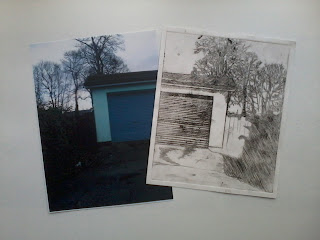Project Evaluation:
Contemporary Landscapes and the Urban Environment
Knowing that the
final project of the year was going to be the most important, I was always sure
that 'Contemporary Landscapes and the Urban Environment' was going to be the
theme. Feedback from tutors and successful work in earlier projects proved that
this was the most appropriate of choices.
I would say my main strength was developing and producing work from the artist
research I collected. I recreated the artist's work to familiarise myself with
their techniques before working from my own photographs and observation. In
some areas of the project, mainly with my final painting, I found that
qualities from different artists have been combined to create a mixed-media
piece that is highly successful.
Not everything went
to plan and there were some challenges along the way. The main reason for this,
I would say, is time management. I could have maybe planned my time a little
better to ensure all work was completed in a certain time limit but with some
of my work, it took longer to complete than I thought it would.
Overall, I’m pleased
with how this project progressed. Although there could have been more, I am
proud of the work I have produced and I think I’ve done well at meeting my
original aims. At the exhibition, I received positive feedback from both tutors
and fellow students which made me realise the choices I made throughout the
project resulted in a successful sketchbook of work and a visually interesting
exhibition.
















.jpg)
.jpg)



















